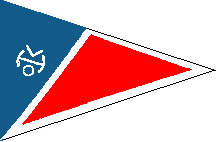 Valley Ho Power Squadron
Valley Ho Power Squadron
 Valley Ho Power Squadron Valley Ho Power Squadron
|
Predicted Log Contests
P/C Max C. Yost, JN Valley Ho Power Squadron
How well do you know your boat? How good are you at piloting your boat in different wind and wave conditions? How well can you navigate your boat between two predetermined points? For the answers to all of these questions why not have your Squadron institute some Predicted Log Contests? While the name “Predicted Log” may sound ominous, conjuring up visions of serious brow wrinkling calculations and somber times, the contests that we in Valley Ho Power Squadron have implemented are really just fun days on the water. And that’s what our love of boating is all about. In the process, however, we each have learned more about our boats and have improved our boat handling skills.
So what is a Predicted Log Contest? In brief, it consists of operating your boat at pre-selected speeds over a course set between various nautical marks and predicting the time you will expend to complete each leg of this course. The skipper who can predict these times most accurately is, of course, the winner. How dull that all sounds. But we at Valley Ho have made it easy for anyone to participate and have fun, even slower moving sailboats. And here’s how. A couple of our members created spreadsheet programs to calculate or measure the distances between each mark, and further to calculate the travel time between these marks for any designated boat speed. Each contestant is free to make his or her own calculations using just the knowledge learned in the Basic Boating course, which, with a little practice, is all that is needed. However, we have tried to make it easier for those new to basic piloting, and to remove the drudgery from the preparations. More detailed explanations of the whole process can be gleaned from the USPS Supplemental Program text “Predicted Log Contests” available through your Educational Department.
Initially, our members were able to complete the established courses with cumulative errors in the range from 4% to 10% with occasional error rates running as high as 25% for a skipper who missed a mark or otherwise got “lost.” Our more recent contests, however, have seen these Pilots, now deserving of capitalization to their title, register errors in the vicinity of 1% to 2%, certainly comparable to those scores demonstrated by some confirmed national Predicted Log contestants. Of course, reaching this degree of piloting skill requires learning your boat’s operating characteristics at different speeds and over different sea states.
In order to enhance the contests as a significant Squadron activity a trophy was created to be presented to the year’s champion. The criteria for winning can either be for winning the Grand Contest, usually held in August or September, or for having the lowest average score over a series of contests held throughout the summer boating season. This plaque is usually awarded at the “Victory Lunch” held following the final contest after the official judge has computed all scores for each of the entrants. Or it may be awarded at the Squadron Recognition Dinner. The lunch can, of course be held at a local restaurant, or, better yet, at a Bar-B-Que held on shore or on one of the contestant boats and is part of the overall enjoyment.
Why not get involved in these predicted log contests and enjoy the camaraderie which is a part of USPS. Even those of you who do not own boats can participate as crew members or Observers on the contestants’ boats.
 |
 |
 |
|
Grecian Urn Trophy Presented to the Annual Winner |
P/C Nat Goldberg, AP Awarded the Trophy for 2003 by Cdr Mike Kabo, JN | P/C Nat Goldberg, AP with Observer and Crew |